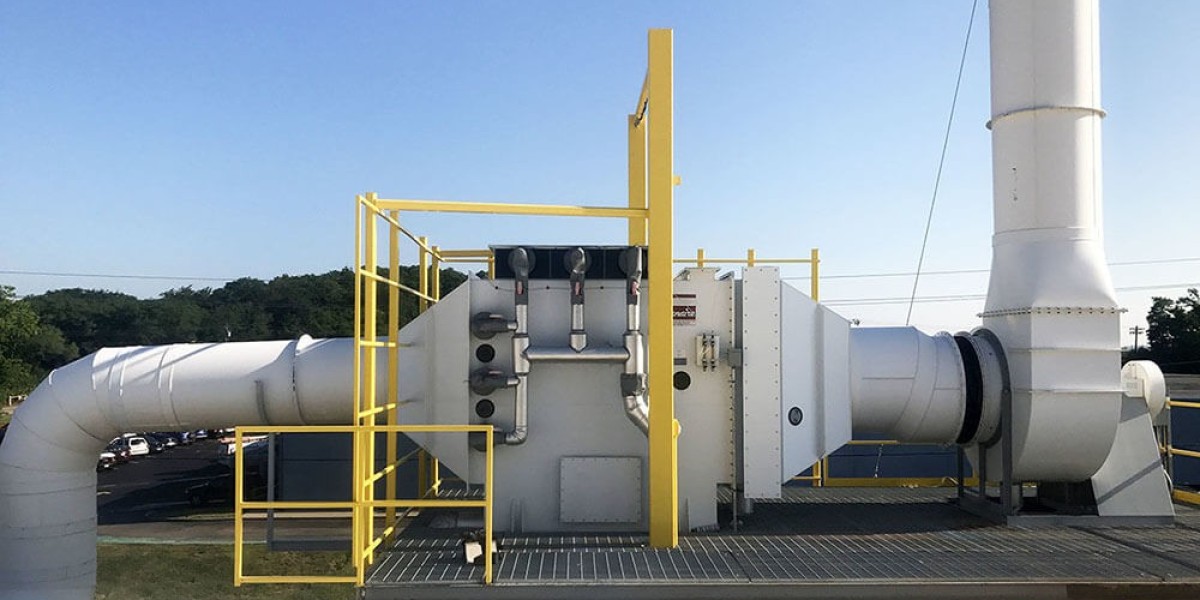What are Gas scrubbers?
Scrubber System, also known as air pollution control devices, are equipment used to remove gaseous or particulate pollutants from industrial exhaust streams containing fumes, gas vapors, and airborne particulate matter. The main function of a gas scrubbers is to purify the air that would normally be emitted directly into the atmosphere from various industrial processes. There are different types of gas scrubbers that use various techniques to capture and remove targeted pollutants from exhaust streams.
Wet Scrubbers
One of the most common types is wet scrubbers, which use the interaction between gas and liquid to remove pollutants. In wet scrubbers, the polluted exhaust gas is brought into contact with a reagent liquid, usually water, within an absorption tower or packed bed. As the exhaust gas bubbles through the liquid, targeted pollutants dissolve in or react with the liquid and get captured. Different variations of wet scrubbers include venturi scrubbers, impingement plate scrubbers, packed tower scrubbers, and spray towers. Wet scrubbers are effective at capturing particulate matter, acid gases, and some vaporous pollutants.
Dry Scrubbers
Dry scrubbing techniques do not use a liquid medium and are more effective at removing vaporous or gaseous pollutants. Scrubber System One example is dry sorbent injection systems where a dry reagent like sodium bicarbonate or hydrated lime is injected upstream of a particle collection device like a fabric filter. The dry reagent provides an alkali reserve that neutralizes acid gases through chemical reactions as they pass through the collection system. Some other types of dry scrubbers are spray dry absorbers, dry injection/fabric filters, and selective catalytic reduction systems.
Particulate Control Devices
Gas scrubbers also include particulate control devices like baghouses or fabric filters to capture filtered particles after the gas stream passes through a scrubbing system. Baghouses work on the principle that particles adhere to the surface of filter bags as the gas stream passes through. Periodically, the caught particles are removed from the bag surfaces by methods like reverse air cleaning techniques. Electrostatic precipitators are another form of particulate control devices that use electrical forces to attract and capture particulates.
Smokestack Gas Scrubbers
For industries that burn fossil fuels, scrubbers installed at the smokestacks help remove particulate matter, sulfur dioxide, and other pollutants in flue gases before they are released into the air. In these scrubbers, the hot flue gases pass through a spray chamber where a reagent like limestone slurry is sprayed counter-currently. This neutralizes the acid gases through chemical reactions like this: CaCO3 + SO2 → CaSO3 + CO2. The resultant slurry containing captured pollutants is later treated or disposed of safely.
Scrubber Applications
Scrubber System are used across industries for environmental compliance and controlling air pollution emissions. Some major applications include controlling sulfur dioxide emissions from coal combustion at power plants, removing acid gases from non-ferrous smelting processes, capturing heavy metal particulate from municipal waste incinerators, and treating off-gases from industries like chemical, petroleum refining, pulp & paper production, semiconductor manufacturing etc. Mobile source scrubbers are also installed to treat vehicle exhaust. Proper selection, sizing, installation, and maintenance of scrubbers helps ensure efficient pollutant removal.
Scrubber Operation and Maintenance
For optimal performance, regular monitoring and maintenance of gas scrubbers is essential. Process parameters like liquid flow rates, pressure drops across components, and reagent concentrations are continuously measured and controlled. Periodic inspections check for any leaks, obstructions, or deterioration. The reagent medium and captured residues are also carefully managed - slurries treated, solids disposed, chemicals replenished etc. Sometimes, scrubbers also require cleaning or replacement of worn parts. Proper staff training, record-keeping, and adherence to safety guidelines further ensure effective scrubber functioning over long operating lifetimes. With regular maintenance, gas scrubbers can reliably meet stringent emission standards for decades.
New Advances in Scrubber Technology
Continuous innovation aims to improve scrubber Pollution control technologies further. New material coatings improve mass transfer and regeneration. Advanced controls optimize variable operating parameters. Hybrid wet-dry scrubbing systems leverage the strengths of multiple techniques. Miniature MEMS sensors facilitate real-time monitoring within units. Novel sorbents increase reactive surface areas. Computer simulations aid performance assessments prior to commissioning new installations. These developing technologies promise lower costs, compact designs, higher efficiencies, and easier operation of future gas scrubbers for mitigating industrial air pollution worldwide.
Scrubber system provide a proven and reliable solution for industries to meet clean air regulations by removing targeted gaseous and particulate pollutants from exhaust gas streams before releasing them into the atmosphere. With refined designs and maintenance practices continually enhancing their performance, scrubbers will remain a vital cog in efforts to curb air pollution and promote environmental sustainability into the future.
Get more insights on Scrubber System
About Author:
Ravina Pandya, Content Writer, has a strong foothold in the market research industry. She specializes in writing well-researched articles from different industries, including food and beverages, information and technology, healthcare, chemical and materials, etc. (https://www.linkedin.com/in/ravina-pandya-1a3984191)



